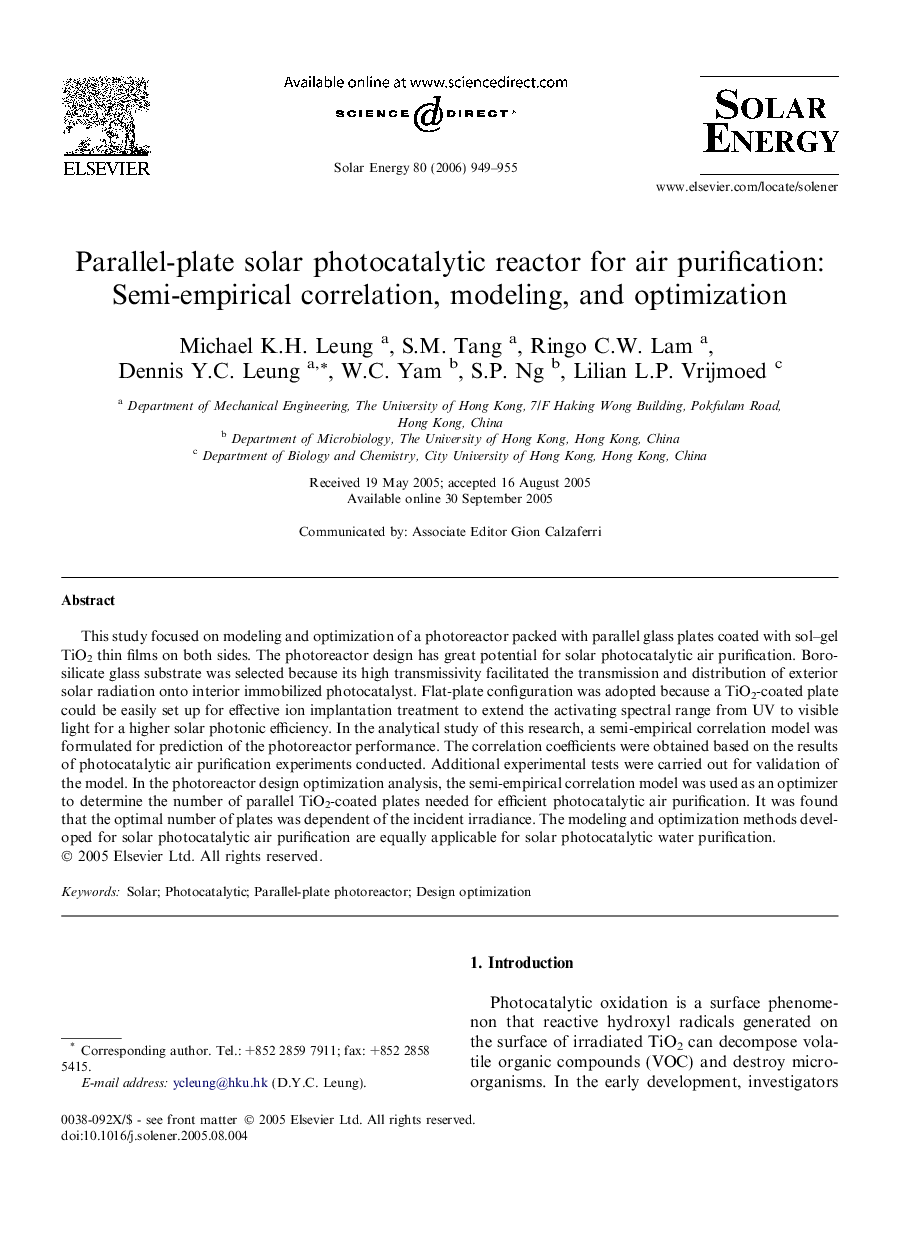| Article ID | Journal | Published Year | Pages | File Type |
|---|---|---|---|---|
| 1551929 | Solar Energy | 2006 | 7 Pages |
This study focused on modeling and optimization of a photoreactor packed with parallel glass plates coated with sol–gel TiO2 thin films on both sides. The photoreactor design has great potential for solar photocatalytic air purification. Borosilicate glass substrate was selected because its high transmissivity facilitated the transmission and distribution of exterior solar radiation onto interior immobilized photocatalyst. Flat-plate configuration was adopted because a TiO2-coated plate could be easily set up for effective ion implantation treatment to extend the activating spectral range from UV to visible light for a higher solar photonic efficiency. In the analytical study of this research, a semi-empirical correlation model was formulated for prediction of the photoreactor performance. The correlation coefficients were obtained based on the results of photocatalytic air purification experiments conducted. Additional experimental tests were carried out for validation of the model. In the photoreactor design optimization analysis, the semi-empirical correlation model was used as an optimizer to determine the number of parallel TiO2-coated plates needed for efficient photocatalytic air purification. It was found that the optimal number of plates was dependent of the incident irradiance. The modeling and optimization methods developed for solar photocatalytic air purification are equally applicable for solar photocatalytic water purification.
